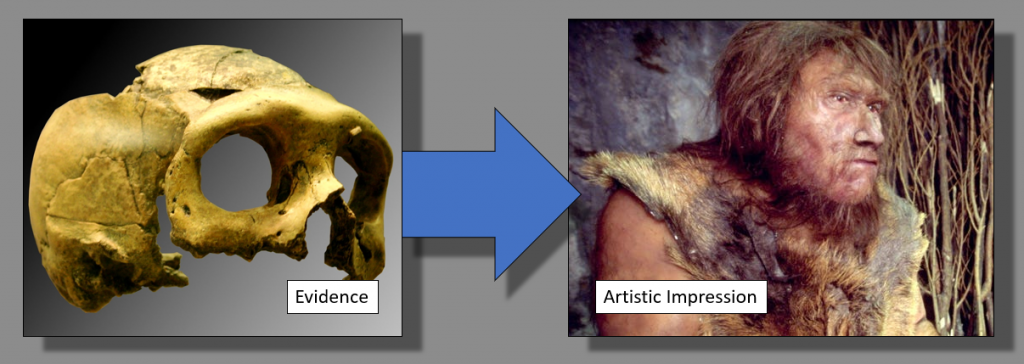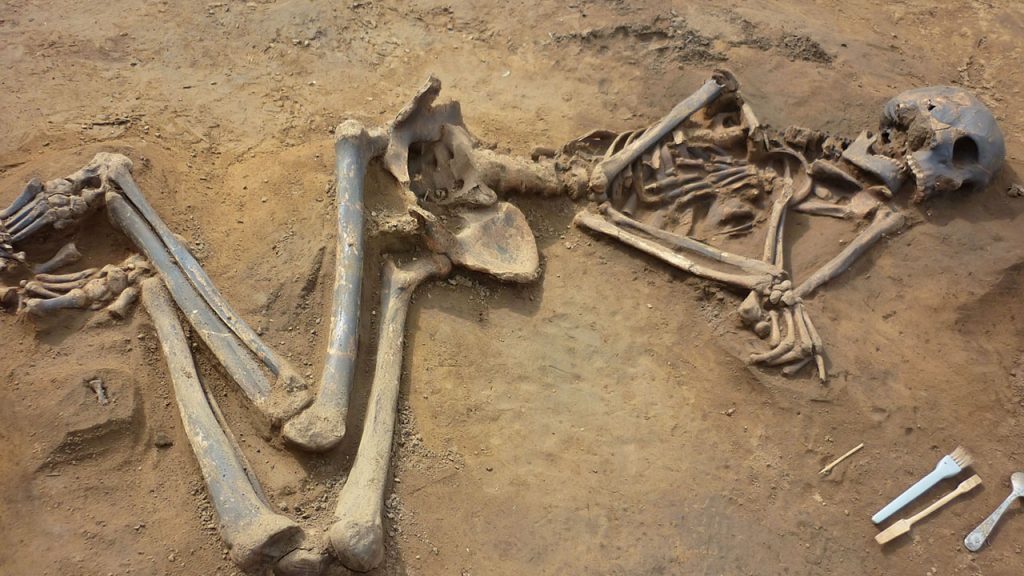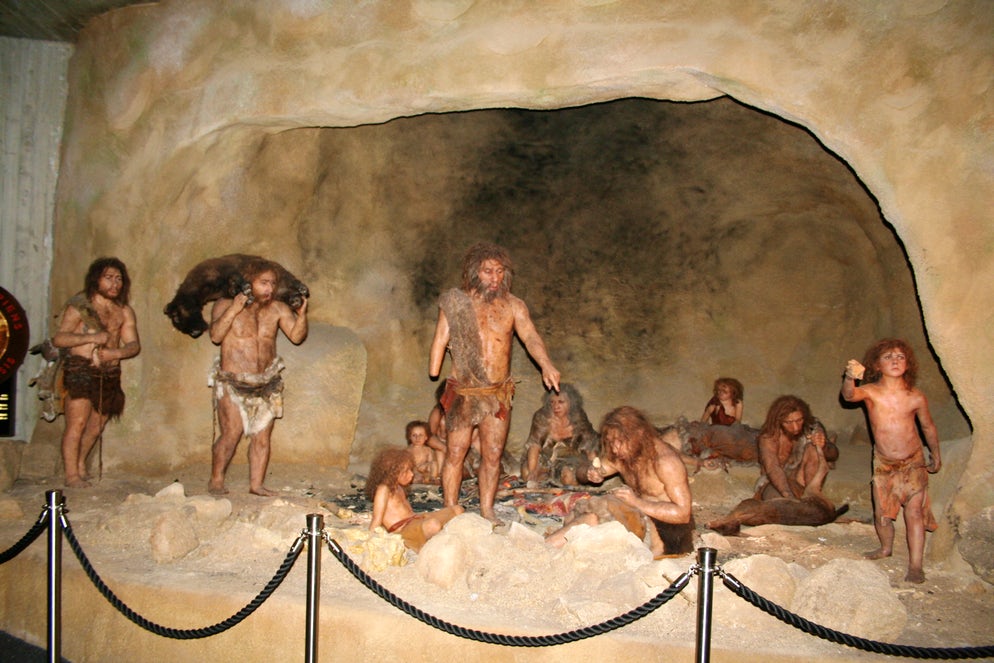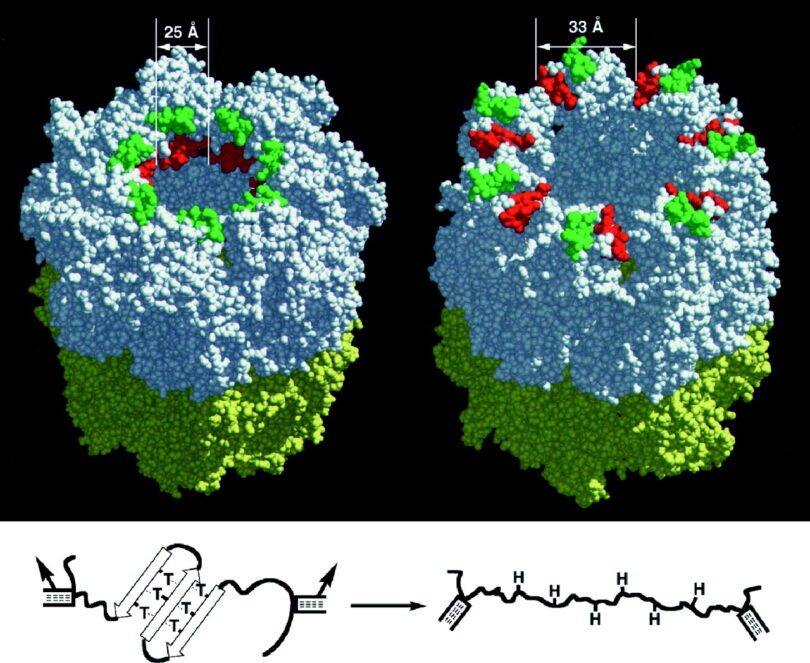Neanderthals (or Neandertals) were a species or subspecies of archaic human, in the genus Homo, which based on evolutionary time scales claim they became extinct around 40,000 years ago.

Neanderthals were closely related to modern humans, sharing 99.7% of DNA. The mapping of the human genome has determined Neanderthal were fully human.
“Upgrading Neanderthal Man”, Time Magazine, May 17, 1971, Vol. 97, No. 20.
As research has shown that all humans today are within .12% (less than one percent) identical within the same range given here.

Still synonymous with brutishness, the first Neanderthal remains were found near Germany in 1856. Until recently, they were still considered to be ignorant, ape-like, stooped and knuckle-dragging brutes. However, genetic and other evidence reveals that Neanderthal was just as human as us. Neanderthals are now recognized as skilled hunters, believers in an after-life, and buried their dead with flowers, made jewelry, and art work. They were even surgeons as one skeleton was discovered with a presumed withered right arm which had been amputated above the elbow.

https://www.itinari.com/neanderthal-museum-in-krapina-aowa
“Upgrading Neanderthal Man”, Time Magazine, May 17, 1971, Vol. 97, No. 20.


